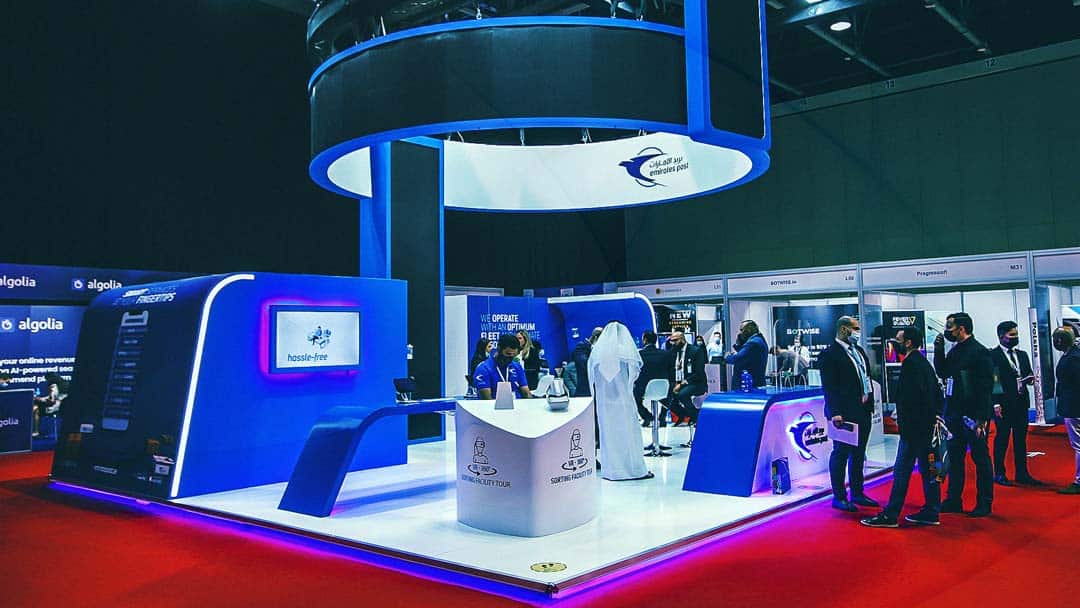A Business Owner’s Guide to Designing a Trade Show Booth
Trade exhibitions provide companies with an excellent opportunity to interact with potential customers and showcase their products. With numerous competitors fighting for attention, a trade show booth design becomes a crucial element for success. In addition to drawing foot traffic, an eye-catching booth may create a lasting impression that promotes brand awareness and interaction. Businesses can effectively utilize trade shows to improve brand exposure and produce quality leads by concentrating on crucial design components and creating an immersive experience. This guide offers a fundamental understanding of how to create an impactful trade show display.
Understanding the Objectives of Your Trade Show Booth
Clearly defining the booth’s goals is essential before you start the design process. All design decisions will be influenced by determining the main objectives, guaranteeing that each component has a function. Common goals include raising brand recognition, introducing a new product, generating leads, or establishing partnerships. Once the objectives are established, consider the target audience. Understanding the interests and demographics of the visitors helps one to customize the message and design of the booth. For example, a handcrafted goods business may utilize a warm, welcoming arrangement that highlights the creativity behind the items. At the same time, a tech company might focus on elegant, contemporary aesthetics with interactive displays. The basis for an effective trade show presence is this alignment of goals, target audience, and design.
FOR INFORMATIVE CONTENT VISIT.. : hot air balloon ride dubai
Crafting an Eye-Catching Design
The design of trade show booths should draw attention from afar, usually including a bold color palette, interesting graphics, and creative use of space to create a visually arresting presence. The arrangement ought to be friendly and motivating for guests to step inside and explore. To capture the attention and convey the brand’s message, think about including a primary focal point such as a big banner or digital display. The attractiveness of the booth can be improved by creative lighting; well-positioned lights can draw attention to items and provide a friendly environment. Moreover, encouraging curiosity and interaction can be achieved by utilizing three-dimensional components like interactive kiosks or product replicas. Maintaining a consistent theme and messaging throughout the booth will strengthen brand identification and leave a lasting impression on attendees.
Engaging Visitors with Interactive Elements
Interactive components are among the best techniques to draw attention and inspire attendees of trade show booths to make connections. Including technology such as touch screens or augmented reality displays can provide immersive events that captivate attendees. Product demonstrations allow prospective consumers to see offers in action, thereby enhancing the experience and providing knowledge. Gamification, such as competitions or quizzes connected to the products, not only entertains but also motivates participants to provide contact information, therefore producing useful leads. Offering free samples or unique products can further encourage interactions. The ultimate goal is to provide a dynamic atmosphere where guests feel driven to participate, therefore enabling important interactions that continue beyond the initial encounter.
Implementing Effective Branding Strategies
Trade show booth design is heavily influenced by branding. From colors and fonts to text and images, every feature of the booth should capture the essence of the company. Consistency is key; all materials, including pamphlets, business cards, and giveaways, should match the style of the booth to provide a unified experience. Using premium materials improves the whole appearance of the booth in addition to the brand’s impression. Furthermore, prominent signage with the brand name and important messages should be clearly visible from a variety of perspectives. Think about incorporating the values and narrative of the brand into the design so that visitors may establish closer connections with it. This calculated approach to branding guarantees that the booth will be unique and supports recognition even after the event concludes.
Post-Show Follow-Up and Evaluation
The trade show’s conclusion does not mean the end of the participation procedure. Turning initial interactions into enduring partnerships requires a strong follow-up plan. Gathering contact details during the event is crucial; utilizing lead retrieval technology can help simplify the process. Following promptly with tailored communications mentioning particular interactions increases the possibility of further engagement. Providing additional resources or information as requested during the event demonstrates professionalism and dedication to the relationship. Additionally, future enhancements depend on assessing the success of the booth after the exhibition. Examining statistics such as lead generation count and interaction quality helps one understand what succeeded and what can be improved. This iterative procedure helps companies improve their strategy for future trade exhibits, thereby optimizing the impact of their presentations.
Conclusion
Creating a successful trade show booth calls for smart preparation and thoughtful planning. Businesses can greatly improve their trade show experience by establishing goals, creating appealing designs, involving visitors with interactive components, using consistent branding techniques, and consistently following up. When used strategically, trade show booths become more than just tangible locations; they become effective instruments for growth, engagement, and connection that eventually propel companies to success in a cutthroat industry.






